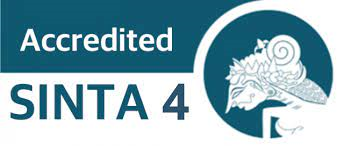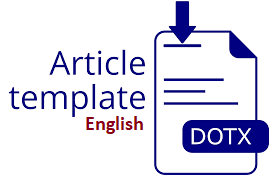Evaluasi Usability Pada Sistem Informasi Beasiswa Menggunakan Metode Heuristic Evaluation dan Think Aloud
DOI:
https://doi.org/10.30865/klik.v3i6.873Keywords:
Evaluation; Usability; Scholarship Information System; Heuristic; Restrospective Think AloudAbstract
The scholarship information system needs to cover several aspects so that it can always maintain the superior quality of use and existing information, one of which is the usability aspect. Based on initial observations that have been made on the information system, there is user dissatisfaction such as sometimes errors when inputting data by staff, inconsistencies in some displays, no menu for forgotten password, no contact information, no help menu, parts of the site interface are difficult to understand. . The problem is related to usability. Usability evaluation is carried out to evaluate the system based on the level of effectiveness, efficiency and satisfaction. The purpose of this research was to evaluate the ease of use of the UIN Suska Riau Scholarship information system. The purpose of this evaluation is to see how easy the system is to use and to make recommendations about possible improvements. Data collection through observation, interviews, and questionnaires. in the heuristic evaluation method the data analysis method used is usability testing, and the data processing tool used is Statistical Product Solution (SPSS) Statistics 23 software from IMB Software. and 8 to 10 respondents for Think Aloud. For the evaluation of this study, two approaches were used, Heuristic Evaluation and Think Aloud. Heuristic Evaluation is used to evaluate the interface using a heuristic questionnaire, while Think Aloud is used to evaluate the use of the information system based on what the user says. At the Think Aloud data collection stage, each participant will carry out a task scenario to provide criticism or reveal the problems they are experiencing. The results of the data analysis succeeded in identifying identified gaps in the information system assessed in this study and providing recommendations for improvement. The results of the Heuristic Evaluation Analysis show that this system obtains a percentage score of 75%, which indicates a sufficient level of goodness for its users. However, there is a total of 25% where deficiencies are found in the system, it shows that this system is not good for its users. Then, through Think Aloud analysis, found up to 23 suggestions for improvement for the system being evaluated. Future research can further evaluate the implementation of these improvement recommendations
Downloads
References
D. I. Sensuse and S. H. Prayoga, “Analisis Usability Pada Aplikasi Berbasis Web Dengan Mengadopsi Model Kepuasan Pengguna (User Satisfaction),” J. Sist. Inf., vol. 6, no. 1, p. 70, 2012, doi: 10.21609/jsi.v6i1.278.
D. Caesaron, “evaluasi heuristic desain antar muka (interface) Portal mahasiswa (studi kasus portal Mahasiswa universitas x),” J. Metris, vol. 16, no. 01, pp. 9–14, 2015.
P. Handiyani and A. Hermawan, “Kredibilitas portal berita online dalam pemberitaan peristiwa bom Sarinah tahun 2016 (Analisis isi portal berita detik. com dan kompas. com periode 14 Januari-14 Februari 2016),” J. Komun., vol. 12, no. 1, pp. 51–68, 2017.
T. K. Ahsyar, A. Jakawendra, and S. Syaifullah, “Analisa usability website berita online menggunakan metode user centered design,” J. Ilm. Rekayasa dan Manaj. Sist. Inf., vol. 6, no. 2, pp. 165–172, 2020.
L. D. Farida, “Pengukuran User Experience Dengan Pendekatan Usability (Studi Kasus: Website Pariwisata Di Asia Tenggara),” Semnasteknomedia Online, vol. 4, no. 1, pp. 1–3, 2016.
N. L. P. R. Indriyani, G. R. Dantes, and K. Y. E. Aryanto, “Analisis Kebermanfaatan Website Sekolah Tinggi Pariwisata (Stipar) Triatma Jaya Menggunakan Metode Usability Testing,” Int. J. Nat. Sci. Eng., vol. 1, no. 2, pp. 56–64, 2017.
M. Prabowo and A. Suprapto, “Usability Testing pada Sistem Informasi Akademik IAIN Salatiga Mengunakan Metode System Usability Scale,” JISKA (Jurnal Inform. Sunan Kalijaga), vol. 6, no. 1, pp. 38–49, 2021.
I. M. Sukarsa, I. P. W. Buana, I. P. J. A. Utama, and N. W. Wisswani, “Evaluasi Usability dan Perbaikan Antarmuka untuk Meningkatkan User Experience Menggunakan Metode Usability Testing (Studi Kasus: Aplikasi Warga Bali),” J. Teknol. Inf. dan Ilmu Komput., vol. 9, no. 5, pp. 1003–1010, 2022.
T. K. Ahsyar, Husna, and Syaifullah, “Evaluasi Usability Sistem Informasi Akademik SIAM Menggunakan Metode Heuristic Evaluation,” Semin. Nas. Teknol. Informasi, Komun. dan Ind., vol. 11, no. November, pp. 163–170, 2019.
S. Gupta, “A comparative study of usability evaluation methods,” Int. J. Comput. Trends Technol, vol. 22, no. 3, pp. 103–106, 2015.
J. Nielsen, “Usability Engineering (AP Professional, New York).” 1993.
A. P. Hendradewa, “Perbandingan Metode Evaluasi Usability (Studi Kasus: Penggunaan Perangkat Smartphone),” Teknoin, vol. 23, no. 1, 2017.
M. I. F. Pratama, H. M. Az-Zahra, and N. Y. Setiawan, “Evaluasi usability menggunakan metode Think Aloud dan Heuristic Evaluation pada aplikasi mobile Padiciti,” J. Pengemb. Teknol. Inf. dan Ilmu Komput. e-ISSN, vol. 2548, p. 964X, 2019.
P. Tantri Fajarini, N. K. Ayu Wirdiani, and I. P. Arya Dharmaadi, “Evaluasi Portal Berita Online pada Aspek Usability Menggunakan Heurtistic Evaluation dan Think Aloud,” J. Teknol. Inf. dan Ilmu Komput., vol. 7, no. 5, p. 905, 2020, doi: 10.25126/jtiik.2020753587.
O. C. B. Sianipar, K. Ukar, and B. Permana, “Evaluasi Antarmuka Pengguna untuk Meningkatkan Pengalaman Pengguna dengan Metode Heuristic dan Think-aloud,” Media Inform., vol. 20, no. 3, pp. 171–178, 2021, doi: 10.37595/mediainfo.v20i3.83.
Y. G. Pranandita, H. M. Az-Zahra, and D. Priharsari, “Evaluasi Usability pada Aplikasi Among Kota dengan Metode Think Aloud dan Heuristic Evaluation,” J. Pengemb. Teknol. Inf. dan Ilmu Komput. e-ISSN, vol. 2548, p. 964X.
T. K. Ahsyar and D. Afani, “Evaluasi Usability Website Berita Online Menggunakan Metode Heuristic Evaluation,” J. Ilm. Rekayasa dan Manaj. Sist. Inf., vol. 5, no. 1, pp. 34–41, 2019.
W. Welda, D. M. D. U. Putra, and A. M. Dirgayusari, “Usability Testing Website Dengan Menggunakan Metode System Usability Scale (Sus) s,” Int. J. Nat. Sci. Eng., vol. 4, no. 3, pp. 152–161, 2020.
I. N. Arifin, H. Tolle, and R. I. Rokhmawati, “Evaluasi dan Perancangan User Interface untuk Meningkatkan User Experience menggunakan Metode Human-Centered Design dan Heuristic Evaluation pada Aplikasi Ezyschool,” J. Pengemb. Teknol. Inf. dan Ilmu Komput. e-ISSN, vol. 2548, p. 964X, 2019.
I. Astuti, W. A. Kusuma, and F. Ardiansyah, “Analisis usability homepage situs web Perpustakaan Nasional RI menggunakan metode think-aloud,” J. Pustak. Indones., vol. 15, no. 1–2, 2016.
Y. Ichsani, “Usability performance evaluation of information system with concurrent think-aloud method as user acceptance testing: a literature review,” in International Conference on Science and Technology (ICOSAT 2017)-Promoting Sustainable Agriculture, Food Security, Energy, and Environment Through Science and Technology for Development, 2017, pp. 116–121.
D. Sugiyono, “Prof, Statistika Untuk Penelitian,” Bandung Alf. Bandung, 2017.
K. A. Ericsson and H. A. Simon, “Protocol analysis: Verbal reports as data Cambridge,” EUA Massachusetts Inst. Technol., 1993.
M. I. Sya’Roni, A. P. Kharisma, and F. Amalia, “Perbandingan hasil metode evaluasi usability antara Heuristic Evaluation dengan Think Aloud pada kasus web Filkom Apps untuk mahasiswa,” J. Pengemb. Teknol. Inf. dan Ilmu Komput. e-ISSN, vol. 2548, p. 964X, 2017.
S. I. Irwan, I. S. Sitanggang, and B. Mustafa, “Analisis Usabilitas Sistem Informasi Manajemen Penerimaan Koleksi Deposit Di Perpusnas Berdasarkan Pendekatan Evaluasi Heuristik,” J. Pustak. Indones., vol. 14, no. 1, 2015.
Bila bermanfaat silahkan share artikel ini
Berikan Komentar Anda terhadap artikel Evaluasi Usability Pada Sistem Informasi Beasiswa Menggunakan Metode Heuristic Evaluation dan Think Aloud
ARTICLE HISTORY
Issue
Section
Copyright (c) 2023 Riska Ayuni, Tengku Khairil Ahsyar, Muhammad Luthfi Hamzah

This work is licensed under a Creative Commons Attribution 4.0 International License.
Authors who publish with this journal agree to the following terms:
- Authors retain copyright and grant the journal right of first publication with the work simultaneously licensed under Creative Commons Attribution 4.0 International License that allows others to share the work with an acknowledgment of the work's authorship and initial publication in this journal.
- Authors are able to enter into separate, additional contractual arrangements for the non-exclusive distribution of the journal's published version of the work (e.g., post it to an institutional repository or publish it in a book), with an acknowledgment of its initial publication in this journal.
- Authors are permitted and encouraged to post their work online (e.g., in institutional repositories or on their website) prior to and during the submission process, as it can lead to productive exchanges, as well as earlier and greater citation of published work (Refer to The Effect of Open Access).
















